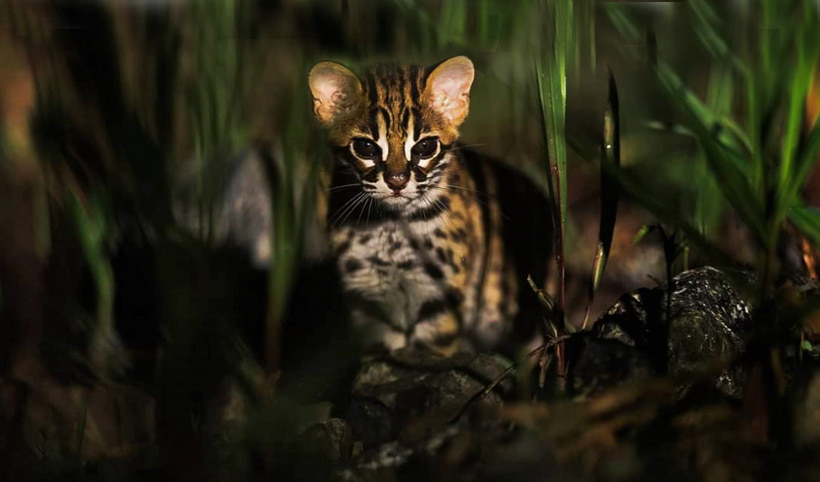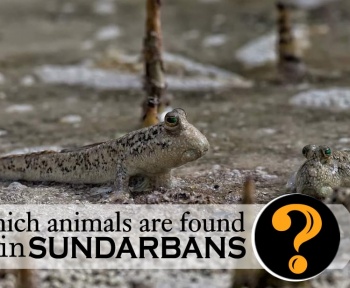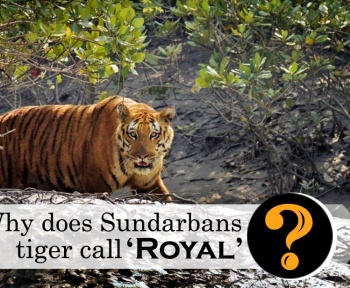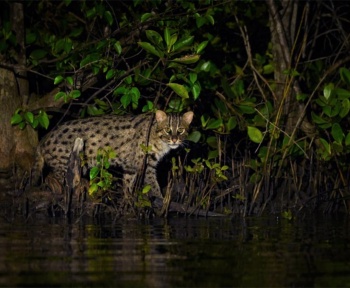Wildlife plays an exceptionally crucial role in maintaining the biological and ecological processes which are significant to human life on earth- misrepresentation. Wildlife is critical for maintaining the heritage and traditional culture of a particular place.
As per the data revealed from Hunter’s Statistical Account of Sundarban in 1878 “Royal Bengal Tigers, Rhinoceros, Leopards, Wild Hogs, Wild Buffaloes, Wild Cats, Spotted Deer, Hog Deer, Barasinga, Barking Deer, and Monkeys are the major varieties of wild animals found in Sundarbans.
The specific pride of Bengal has undergone massive transformations over the past few decades.
Where the land of ferocious tigers not only bid goodbye to a certain species on a forever basis but also welcomed typical varieties on the cornerstone.
The sightings of Leopard cat and Fishing cat are rare in the mighty land of Bengal Tigers. Relying heavily on the factor of ‘luck’ the liverish varieties of cats are popularly known for their nocturnal habitats. This makes their glimpse all the more gripping when initiating any wildlife photography holidays.
Characteristics and facts about Leopard Cat –
The subspecies of this distinct member of the cat family vary greatly in fur color, skull shape, tail length, and ultimately their size of carnassials.
As per the revelations of the Archaeological evidence the Leopard cat indeed was one of the first cat species that domesticated the Shaanxi and Henan Provinces of Neolithic China nearly 5000 years back.
The size of a leopard card lies on par with that of a domestic cat. The cat however has sylphlike legs with webs between its toes.
The small head of the mammal is marked with two protruding dark stripes that are accompanied by a narrow white muzzle. The dark stripes of the mammal run from eyes to ears whereas the white one runs from eyes to nose.
Sundarban wildlife photography tour is even taken for this animal that has long and rounded ears having central white spots. The spots on the body of the mammal vary according to size and color.
The alluring tail of the mammal is nearly half the size of its head-body length that is topped with specific rings near its black tip.
The backdrop cover of the fur is tawny having a white belly and chest. The fur color of this distinct member of the cat family is usually yellowish-brown in the southern population but is largely pale silver-grey in the northern ones. The black spot marking however depends upon the subspecies.
In the tropical regions, leopard cats weigh 0.55–3.8 kg (1.2–8.4 lb), have head-body lengths of 38.8–66 cm (15.3–26.0 in), with long17.2–31 cm (6.8–12.2 in) tails. Reports from the forest experts even state that these mammals put on weight before the winter months while shed the same in the initiation of spring.
The population of these cats is largely distributed in the Korean Peninsula, Indochina, China, India, and even parts of Northern Pakistan.
The mammal lives in the tropical evergreen rainforests or the plantations at the sea range in the foothills of the Himalayas at an elevation of 1000m.
Ecology and Behavior –
Except during the breeding season Leopard cats are solitary.
The mammals prefer to hunt at night via the methodologies of stalking murids, hares, and tree shrews.
The leopard cats are quick-moving climbers who choose to feed on rats of the forest areas. The cats are also regarded as great swimmers where the two distinct sexes actively mark their areas via urine, scratching and head rubbing.
Diet –
The leopard cats are carnivores that feed on several types of prey that includes rats as well. Finding its cues from the domestic cats the mammals choose their various feeds in lizards, amphibians, insects, and birds. Rats, mice, and small rodents form the major part of their diet that is in turn also supplemented with poultry, grass, eggs, and aquatic prey.
The cats are active hunters that catch hold of their prey via biting and pouncing. The grip standard of their claws is so tighter that they hold the capability of killing an animal until they are dead. Aerial birds also make a part of their major diet.
Reproduction & Development –
The breeding period of these distinct varieties of cats relies heavily upon climatical conditions. Where in tropical regions that younger ones are given birth throughout the year. Areas having lower temperatures have females usually reproducing in the spring months.
The gestation period usually longs for 60 to 70 days.
The litter size of kittens usually ranges between two to three kittens. The kittens get their initial canine
breakthroughs after the completion of four weeks for consuming meat.
The female cats reach their sexual maturity at the age of 14 months and thereby are dominant and capable enough to reproduce once every 4-5 months.
The Leopard cat has an average lifespan of 4 years and can live up to 20 years in captivity.
Threats –
The wildlife safari in INDIA is undergoing a constant threat of extinction.
The leopard cats in particular were mainly hunted for their fur. The ban imposed by the European Union back in the year 1988 further implemented a much-required stop-through in the trade.
In the current time, the trade on the same is mitigated greatly. Yet, the cat continues to be hunted as a part and parcel of food, fur, and even for being sold as a pet.
Conservation –
As per the revelations of Prionailurus bengalensis the population of the cat is above 50,000.
The distinct member of the cat family has also made its name in the IUCN Red List as the animal is a victim of habitat loss and end-to-end hunting activities. Also regarded as fragile predators the cats prefer to choose their habitat close to water bodies.
Having exceptional climbing skills makes the animals an ultimate pro in catching their prey like birds and bats. Rare sightings of the animal are also found in the agricultural and rural areas.
Ecosystem Roles –
The particular species of the cat family is one of the master pro variety when it comes down to controlling the Pest Population. On different islands, they are probably the only carnivore’s population present.
These cats further prey on such beastly carnivores that can be a source of the Feline Immunodeficiency virus that is proving to be dangerous to the cat population.
Conservation Status –
Leopard cats are to date found across their marked geographical boundaries where they are even classified as species that are witnessing severe population decline.
The power of wildlife photography cannot be declined when exploring the best tiger reserve in INDIA.
At the ground level, the knowledge and the exposure shared by photographs can enhance the issue being faced in the wilds. A Sundarban wildlife photography tour provides its travelers the filming chance to play an active role in the conversion process.
Over the years the wildlife photographers have played an active role in providing the world apprehension on different species that has even inspired the general mankind to take wildlife all the more seriously.
Reference –
Wikipedia, Animal Diversity Web, Wild Cat Conservation, Conservation India




